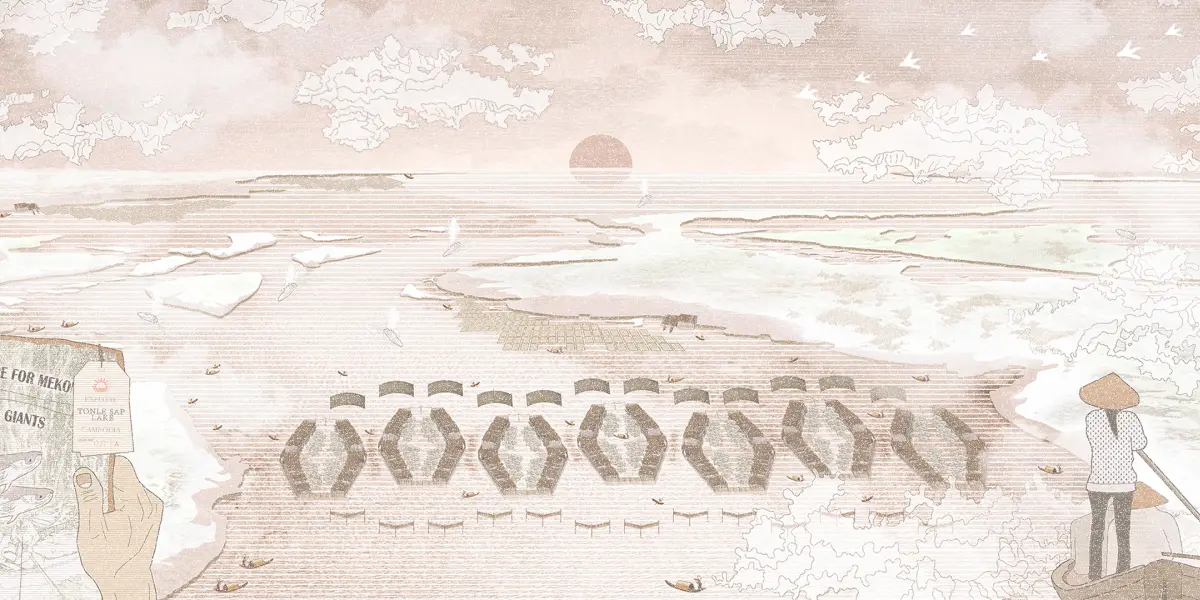
Reversing The Flow; Altering the Trajectory of Extinction
BY Tan Jian Hao
SUPERVISED BY Assoc. Prof. Tsuto Sakamoto
STUDIO THEME ASSEMBLAGE
Abstract
Tonle Sap Lake’s prominence as the world’s richest inland fishing ground, along with the distinctive spectacle of a seasonal flood pulse, is threatened with the converging impacts of climate change, overfishing and rapid and extensive urbanisation. Ecological degradation is at the forefront, with many aquatic organisms having lost their original living environment and some pushed to the brink of extinction. In particular, the thesis centres around the Mekong Giant Catfish (MGC), a cultural keystone species endemic to the Mekong River. By weaving the MGC’s migratory and seasonal flood pulse schedules around native practices and veneration for the MGC, the thesis examines and explores the mediated relationships between animal, environment and human. It engages the lake between two sites, leveraged in a temporal and shape-shifting architecture – event- and time-based. The architecture comprises of three systems: a water paddock-cum-deep pool formation, mangrove restoration through natural sediment deposition with sediment-stabilising freshwater mangroves and mangrove mimicry nursing grounds. Space is re-assessed through the point of view of the MGC. Architecture is designed around its manoeuvres and physiological behaviours in parallel to principles of river dynamics. The aim is to construct habitats using natural forces and reduce the dependency on technological intervention. Through the space and rituals of these native and natural events, the architectural proposition (at scales of infrastructure, designed with an ecological point of view) targets to catalyses tourism and ecological responsibility. This hopes to re-position the significance of fish conservation for the Mekong region.
Supervisor Comments
To achieve a sustainability of the natural world, an empathy toward non-human species is inevitable. The challenge of the project is to express such an empathy through architectural design that intervenes and re-designs an existing environment to establish an alternative ecology where endangered species can survive better than now. Focusing on the Mekong Giant Catfish, the project aimed to enhance its habitat in Tonle Sap Lake in Cambodia by providing architectural devices and modifying the landform. A linear architectural structure – a temporary fish tank, provides deep and safe habitat for the fish, while directing the flow of water to deepen the lakebed naturally and permanently. The seasonal events facilitate people to work on the maintenance of the system. As a whole, project expected to create an alternative ecological sphere for the fish to survive
- Assoc. Prof. Tsuto Sakamoto